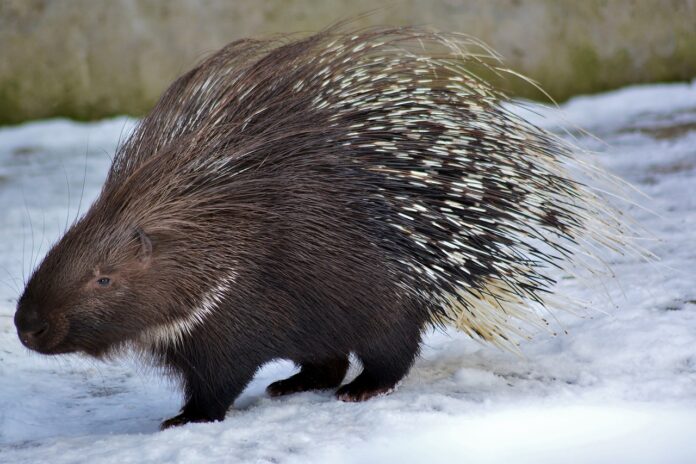Unique and unlike any other animals, porcupines are fascinating creatures, notable for their curious defense mechanism developed over millions of years of evolution. The sharp quills covering their bodies somewhat resemble those of hedgehogs, as they also serve to protect them from predators who might otherwise be eager to hunt porcupines. However, these animals are also quite cunning, and in most cases, they prefer to rely on their wits rather than their quills.
Facts About Porcupines:
- Some species of porcupines can reach lengths of 80-90 cm (31-35 inches) and weigh up to 25-27 kg (55-60 pounds).
- Porcupines possess the longest quills of any mammal on Earth.
- In addition to quills, they also have fur, which can be either soft or bristle-like.
- According to paleontological findings, porcupines lived in the Ural Mountains region about 100,000-130,000 years ago but later became extinct there due to climate changes.
- Zoologically, porcupines are classified as rodents.
- Scientists have determined that porcupine quills are actually modified hair, evolved over time.
- A wound caused by a porcupine quill can lead to serious inflammation.
- Individual quills can grow up to 40 centimeters (16 inches) in length and have a diameter at the base of up to 7 millimeters (0.28 inches).
- Porcupines are primarily vegetarians, feeding on plant material, although some species may also consume insects.
- It’s challenging to spot them during the day, as most porcupine species are nocturnal.
- The North American porcupine, or “porky,” holds the record for the most quills, with an average of about 30,000 quills on its body.
- Porcupines can raise and lower their quills as needed, thanks to a well-developed system of subcutaneous muscles.
- Unlike hedgehogs, whose quills are firmly attached to their bodies, porcupines can easily shed theirs. A careless predator could end up with hundreds of quills embedded in its body after an unsuccessful attack.
- Lost quills are quickly replaced by new ones.
- Porcupines have a fondness for pumpkins, watermelons, melons, and zucchini, which often leads to nighttime raids on gardens where these crops are planted.
- Even metal mesh fencing cannot keep porcupines out—they can easily gnaw a hole through it.
- Porcupines always line the floors of their burrows with grass and hay, regularly refreshing the bedding.
- They are excellent swimmers, as their hollow quills act as flotation devices, helping them stay afloat with ease.
- In captivity, porcupines can live up to 20 years, but in the wild, their average lifespan is about half that. The official record is 27 years.
- Porcupines are born with soft quills that harden as they mature.
